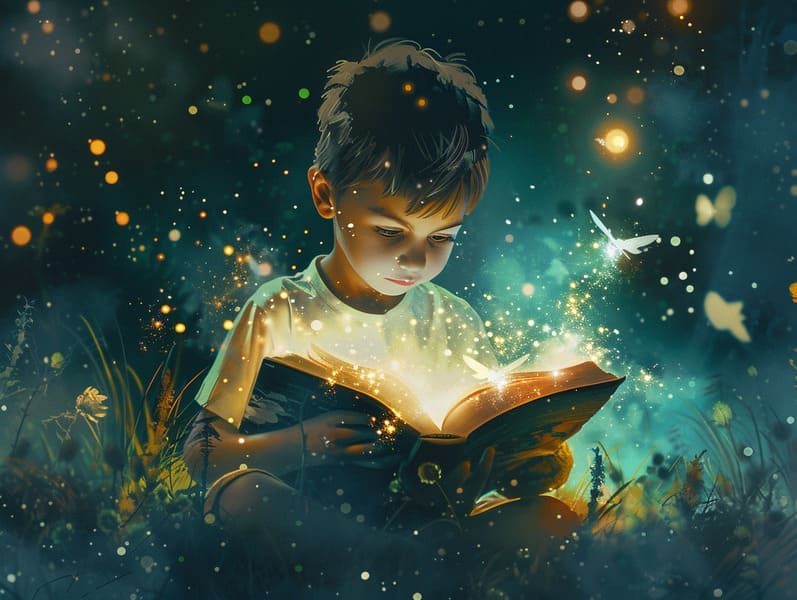Exploring the Roots of Grimm's Fairy Tales and Their Immortal Radiance.
Exploring the Roots of Grimm's Fairy Tales and Their Immortal Radiance.
Blog Article

Timeless fairy tales have ancient roots. These narratives have been narrated from one generation to the next far before they were ever inscribed. They originated from a variety of cultures, including Indigenous traditions. They were initially told among mature audiences, often carrying themes and messages mirroring the societal norms and beliefs of the time.
The Grimm brothers, the two Grimm brothers, were among the first to collect many of these beloved fairy tales. Their anthology, "Grimm's Fables," included classics like "The Little Glass Slipper," "Little Brother and Little Sister," and "Snow White," which have since become mainstays in the world of famous fairy tales. Similarly, Andersen's fanciful narratives, such as "The Little Mermaid," and "The Story of the Ugly Duckling," have won hearts worldwide, solidifying their place in the pantheon of classic fairy tales.
Despite their age, traditional fairy tales remain as significant as ever, especially as children's night stories. These delightful tales are now available in various formats, including vibrantly illustrated books, magical animations, and digital fairy tales.
Their lasting presence can be traced to several magical reasons:
Valuable Lessons: Timeless fairy tales often share important moral lessons. Stories like "The Story of the Boy Who Cried Wolf" teach the merit of integrity, while "The Story of the Tortoise and the Hare" illustrate the merits of perseverance and meekness. These tales offer kids clear distinctions between correct and incorrect, shaping their moral compass in a mild yet profound way.
Empathy and Understanding: Timeless fairy tales frequently portray personalities facing problems and hurdles, fostering young listeners to comprehend with their struggles and applaud their triumphs. For instance, "The Story of Beauty and the Beast" reveals the value of seeing inner beauty to understand the real character of a individual, advancing perception and awareness.
Cultural Insights: Many traditional fairy tales are saturated in the cultural contexts from which they blossomed. Reading these tales can provide informative snapshots into different traditions, fostering a sense of cultural respect and discernment.
Fantasy and Innovation: The magical elements in traditional fairy tales—enchanted objects—provoke children’s inventiveness. These narratives carry readers to otherworldly realms, enlivening inventive dreams and a sense of wonder that stays a lifetime.
Traditional fairy tales are not only mesmerizing but also instructive. They provide mesmerizing tools in developing various cognitive and emotional skills in young readers. When traditional fairy tales are read aloud, they strengthen speaking abilities by bringing new word meanings and complicated sentence structures. This practice also promotes listening skills and focus, as kids concentrate deeply, looking forward to see what happens next.
Furthermore, debating the themes and characters of timeless fairy tales can nurture intellectual skills and evaluative skills. The young are shown to identify patterns, predict happenings, and grasp cause and effect. These conversations also aid young readers reveal their thoughts and feelings, fostering their emotional intelligence.
In today’s digital era, the abundance of online storybooks has made these stories more acquirable than ever. Internet resources and programs make available wide arrays of Grimm's fairy tales that can be looked at or listened via anytime, anywhere. Fairy tales recited are particularly favored, sharing an entertaining method for the young to immerse in these charming stories. Voice books and read-aloud videos guide characters and settings to life, often accompanied by magical sound effects and songs that elevate the storytelling experience.
The timeless allure of classic fairy tales lies in their ability to adapt to modern days while keeping find it here their central messages. Contemporary reimaginings of these narratives often integrate more diverse protagonists and modern settings, making them accessible to today’s audience. However, the essential messages of valor, goodness, and fair play remain unchanged, continuing to appeal to listeners of all ages.
Timeless fairy tales also offer a sense of warmth and knownness. They make accessible a well-structured narrative with a recognizable beginning, middle, and end, often closing with the conclusion of conflicts and the triumph of truth over falsehood. This reliability can be solacing for little ones, showcasing a sense of unchangeability in an dynamic world.
Classic fairy tales continue to mesmerize and enlighten new generations, maintaining their grandeur and importance in modern society. As children's night stories, they confer a perfect blend of wonder and wisdom, furthering moral values, empathy, and creativity. The proliferation of web-based fairy tales and the sought after status of fairy tales told out loud guarantee that these ancient narratives remain attainable to new generations.
By upholding and distributing these tales, we continue to appreciate the rich tapestry of mythology and cultural heritage. Whether you are seeing a richly illustrated book, seeing a virtual collection, or listening to an sound book, the magic of traditional fairy tales is always within reach. These tales illustrate of the enduring impact of stories and its ability to bond us across time and space.
Be it you are reading a colorful picture book, experiencing a electronic library, or hearing an sound book, the grandeur of timeless fairy tales is always within reach.
These stories remind us of the undying force of stories and its ability to draw us together across epochs and places, creating a bond that captivates and teaches alike.